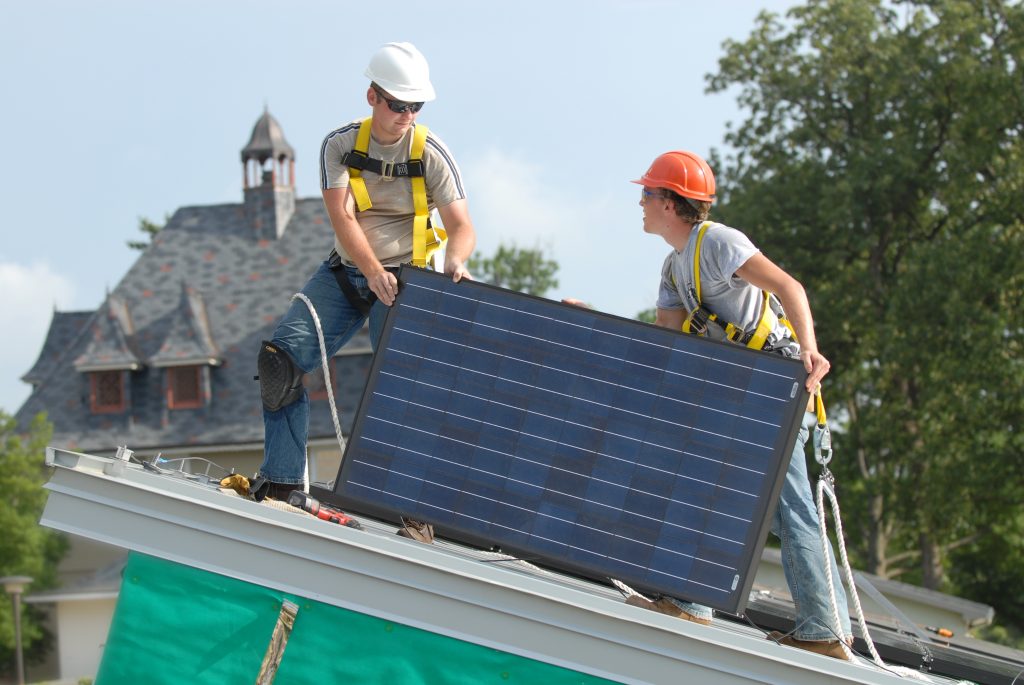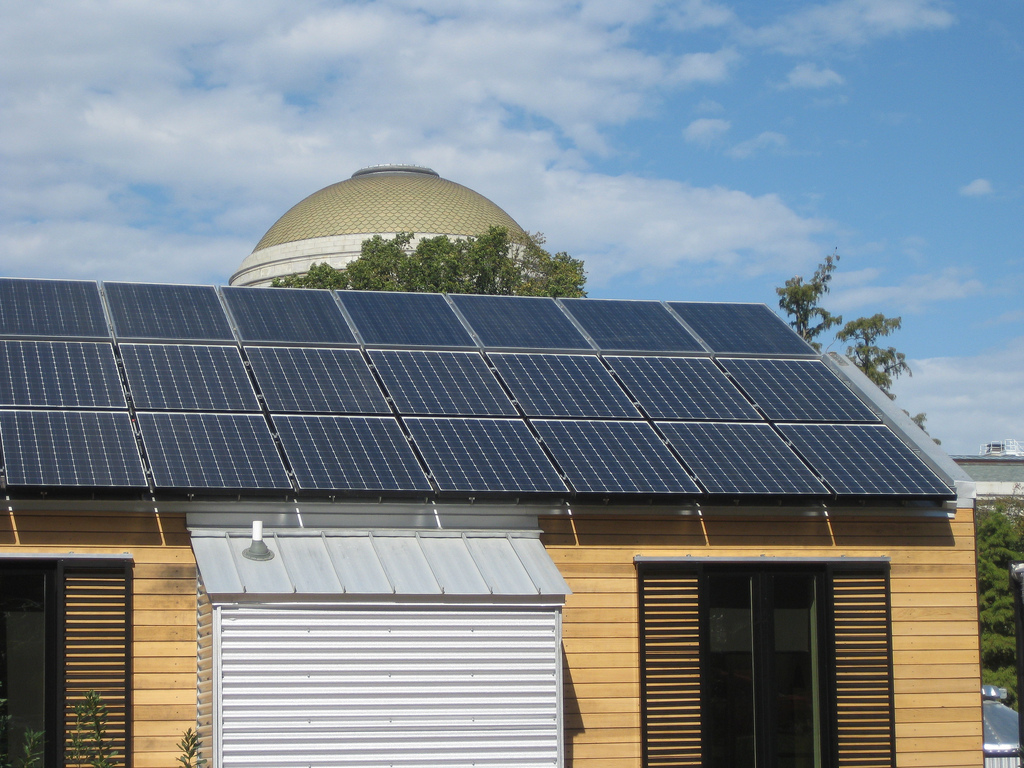As more people become interested in adopting green energy solutions for their homes, the industry responds with innovative and more cost-effective options. The goal is to make it more accessible to the normal population, as solar energy has been historically known to require a hefty investment.
Beyond the matter of cost, the equipment itself has evolved a lot. Of course, bulky solar panels would be very difficult to install on top of houses, but the newer models are now also addressing the issue of design. Basically, it is the time of the evolution of solar energy equipment to suit the individual consumer.
One of the products in the market that is generating a lot of attention is the Tesla solar panel. The current design that has been widely adopted is the traditional panels mounted on the roof. In contrast to this, the Tesla solar panel is built-in, meaning it looks like your roof’s shingles to be installed alongside normal shingles to “blend in” together. The idea is that there is no ugly mounted panel destroying the aesthetic of your home or the building. Instead, it just looks like a normal roof with some shiny shingles mixed in. It is not the first product to be designed this way, but Tesla is the newest company to roll these products out with the premise of improving on older versions.

What are the Differences between a Built-in and a Roof-mounted system?
In a nutshell, both systems have their pros and cons. In order to choose the right system for your property, it is important to know how each works.
Historically, thinner solar panels that are built into the roof shingles produce significantly less energy. This means they need to be bigger or might be less profitable than a mounted system.
1. BIPV Version
First of all, your built-in photovoltaic (BIPV) like the Tesla solar panel fulfills two roles. It protects your home like your usual roof shingles while generating solar power for your personal use. These types of panels are also aiming to be aesthetically appealing, as they may also be indistinguishable from the other roofing materials.
However, older types of BIPVs have encountered the following challenges. First, the panels are much smaller in order to fit the shingles, normally around 6-inches only. This reduces the power generating capabilities of the panels.
Second, the built-in systems make it impossible to ventilate under the solar panel since it is basically connected to the roof. Third, this solar panel does not have the same insulation properties as normal shingles, impacting the household’s energy efficiency numbers.
Lastly, the installation is definitely more difficult, requiring skillful connection of individual cells. Homeowners might also see more issues with the panels themselves due to how they were installed. However, hopefully, Tesla’s solar panels will be able to iron out these kicks and improve on older models.
2. Roof-mounted Version
While many homeowners do not place as much value on the aesthetics as on the practicality of a system, it still is a factor that puts off other potential customers. In some rare cases, there may be restrictions on installing solar panels that might throw off the visuals of the area.
This is probably one of the very few disadvantages of the roof-mounted solar panel. Instead, it has quite a few benefits. First of all is the tried-and-tested manufacturing technique and the lower price that comes along with it. Second is the highest possibility of correct installation because there is simply an industry on solar panel installation.
A huge third factor is the better efficiency because of the closer spacing of the cells and the cooling induced by the ventilation. Lastly, because it has been used in standard solar panel installation, there are lots of batteries, inverters, and other hardware that are compatible with the system.
The Issue of Cost
One huge factor in deciding which system to adopt is the cost. Solar panel systems are already quite expensive in terms of up-front investment, especially if there are no discounts, rebates, or other incentives for homeowners to purchase them. Therefore, a few dollars of savings and of course, the possibility of producing more electricity can really make a huge selling point.
According to Tesla CEO Elon Musk, their roof shingle solar panel is designed to last up to two or three times longer than a normal asphalt roof. In terms of cost, the possibility of saving a lot on future roof installations should also be considered. These really matter as the initial cost of installing their solar panels might go up to more than $45,000 for a typical family home with about 2,000 square feet of roof space. Federal tax benefits will bring this down to a bit over $35,000. If the monthly electric bill is at $150/month, the cost will have been regained after 20 years.
On the other hand, roof-mounted panels will cost less than $12,000 after subtracting the tax credit. With the same electric bill, owners will recoup their investment in 6 years. However, when you have to renovate or improve your roof, you can expect to spend about $12,000, which will end up at about $24,000 for a new roof plus mounted panels. In 13 years you would have regained your investment.
Conclusion
The numbers will say that roof-mounted panels are still the more cost-effective, especially if you just want something that will generate electricity as quickly as possible. However, in different circumstances, the Tesla roof might actually be something to consider.
If your current roof is old and you are planning an upgrade, you can still use the normally mounted panels to save about 35%. But if the Tesla solar roof shingles do last at least two times longer than ordinary shingles, you might save the $12,000 roof installation two times over. This will bring you to the same cost. Plus, with better aesthetics, stronger shingles, a long warranty, and the ease of one-time solar panel and roof installation, you should really consider this as a serious option.
As Tesla and other companies improve and release new BIPV products, the cost may also go down in a few years. Customers stand to benefit a lot with better products to choose from. In the end, more will decide to adopt renewable energy sources like solar, and the planet will also reap huge benefits in the process.
I will business tips provider.

3 Comments
Leave a Reply
Cancel reply
Leave a Reply
This site uses Akismet to reduce spam. Learn how your comment data is processed.





















































































































































































Tristan Chua
September 19, 2017 at 4:36 am
I’ve been using solar panels for quite some time now and I have to agree with you that they are a lot cheaper. Thanks for sharing us this informative tips in regards to tesla roofing or solar panels! Keep up the great work!
Chris Myers
October 5, 2017 at 11:00 pm
I’m curious if you know if having these panels on your home increase it’s value. Obviously you get a tax savings when you put them in and they pay themselves off in around 6 years, but are you getting value add to your home as well?
Jo
August 23, 2018 at 6:45 pm
Solar roofing and solar panels are the new wave of technology and will become the next big thing as we are working toward creating a greener Earth. I’m all in favor of this Tesla’s solar roofing tiles!